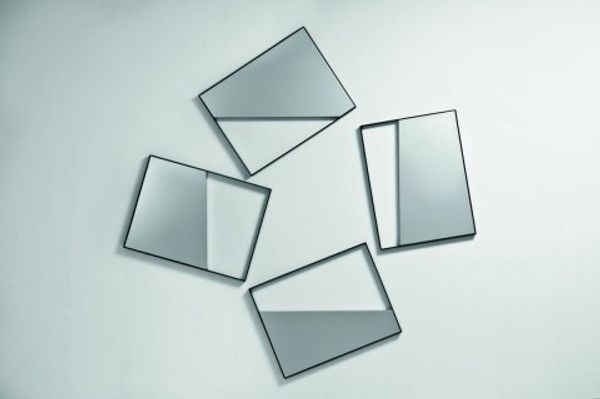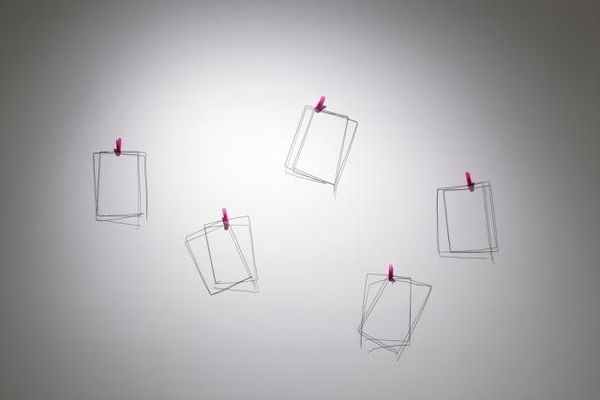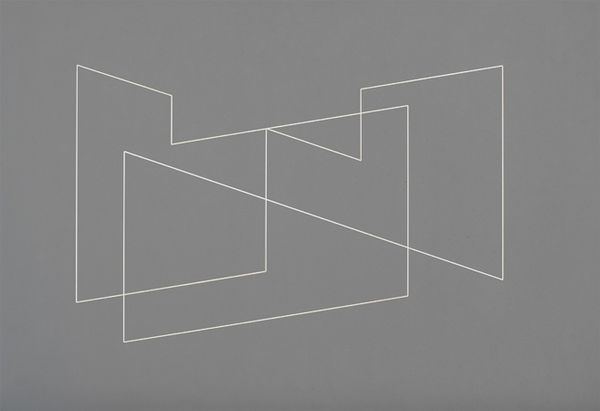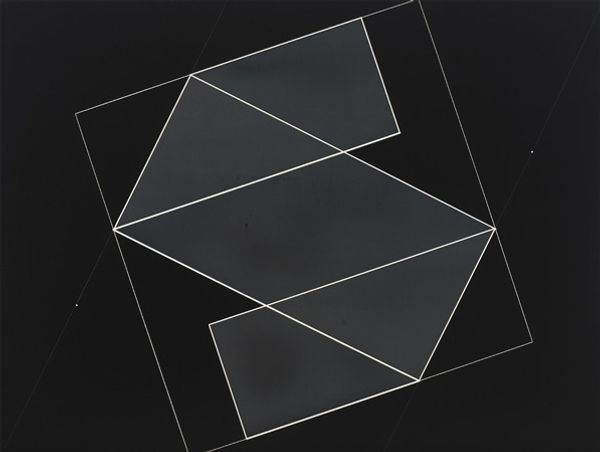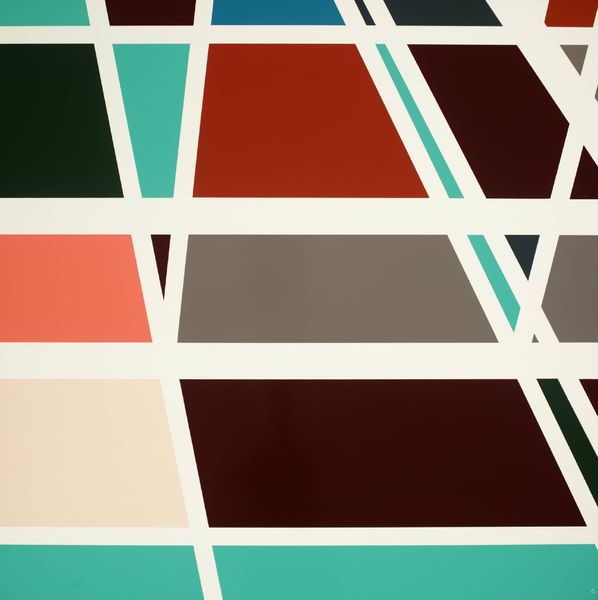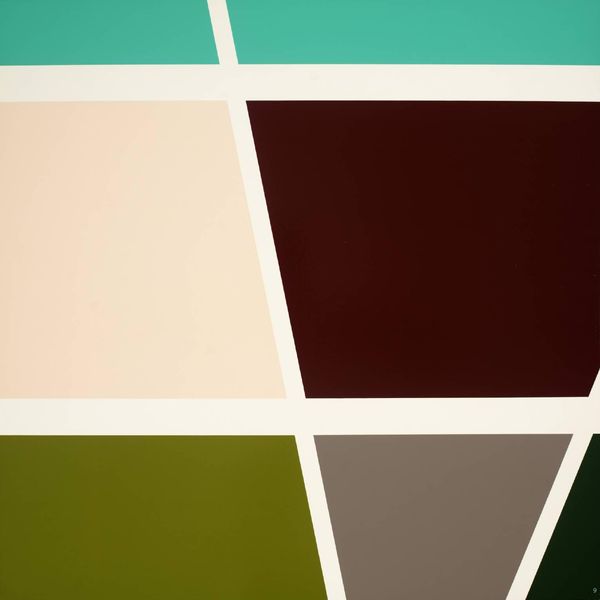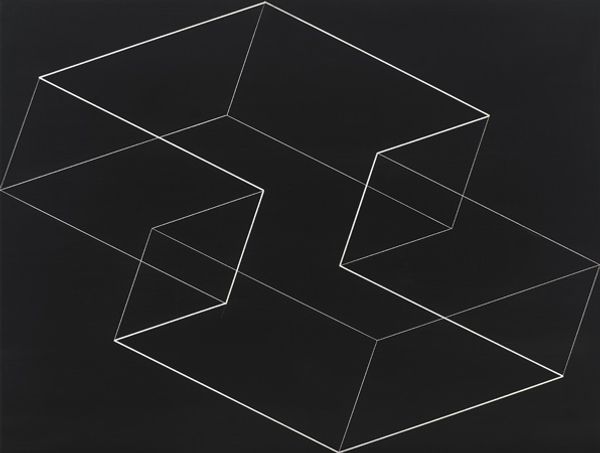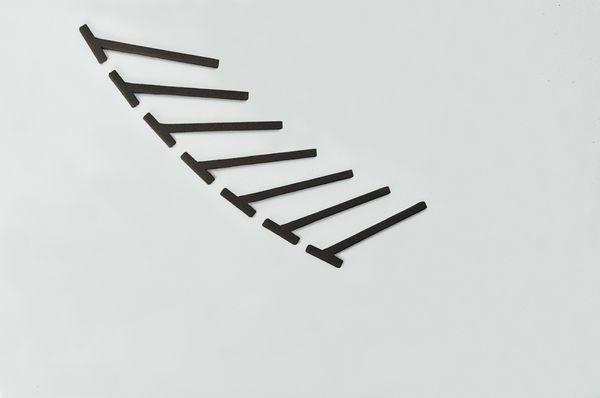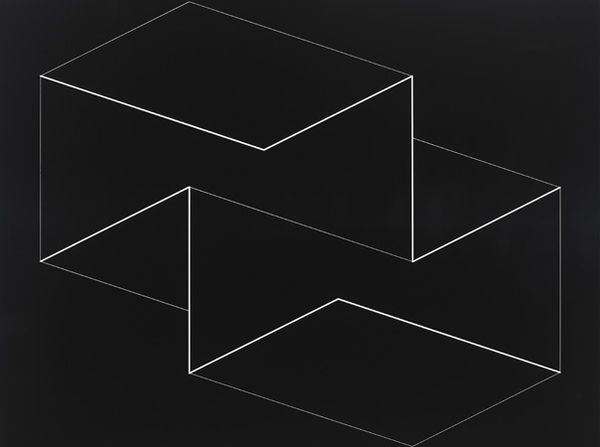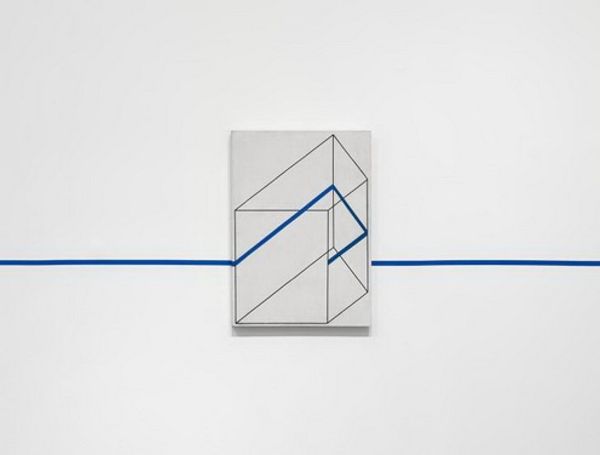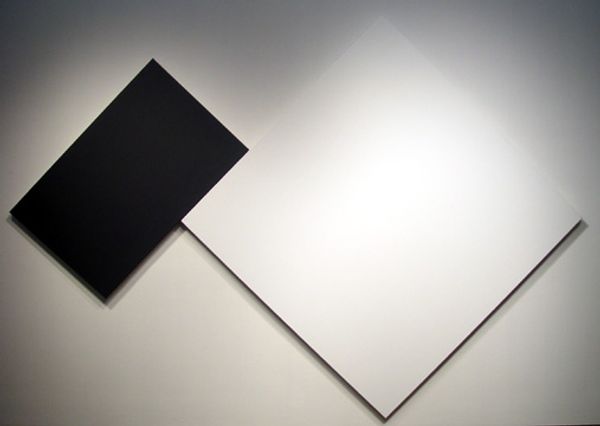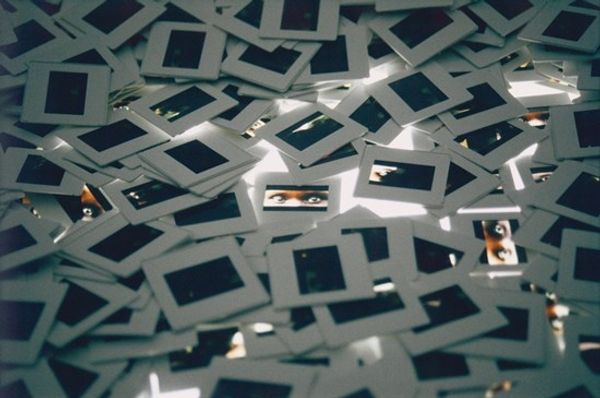
Copyright: Grazia Varisco,Fair Use
Curator: This is "Quadri comunicanti," created in 2008 by Grazia Varisco. It’s an installation comprised of framed rectangles, each bisected into a clear upper portion and a gray lower portion, all arranged along a horizontal axis. What are your first thoughts? Editor: The arrangement feels almost like a musical score—a very minimalist one, anyway. The rectangles suggest notes, slightly off-kilter. It projects a sense of delicate imbalance, which is unsettling. Curator: Varisco was associated with the Italian Kinetic Art movement, and this piece exemplifies a lot of her explorations into perception and optical effects. The serial repetition is characteristic, and she often created works that required audience interaction to activate them fully. Editor: The gray halves certainly anchor the compositions. Gray, often linked with neutrality and objectivity. Does this speak to the socio-political backdrop when she made the piece? Was she intending to project detachment in response to some kind of social tension? Curator: Italian art of this period did explore social tensions and uncertainty, particularly with regard to Italy's own turbulent history. However, this work speaks more to broader minimalist dialogues ongoing with form. Varisco seemed preoccupied with unsettling perceptions of space, with the way the stark, reductive geometries interrupt or comment upon the larger spaces. The clear portions and grey sections invite contemplation, and I would say they serve a different kind of mirroring and engagement with the viewer and larger surroundings. Editor: Mirroring and engagement is interesting, yes. I was drawn to the stark contrasts. It provokes reflection not only in a visual sense, because mirrors are evocative and tied with psychological ideas of selfhood and doubling. Are we invited to contemplate these fractured identities as we move through this modern age? Curator: I'd agree to some extent; however, these are clearly not reflective. The artist also does not give viewers clear guidelines for navigating the symbols, which also feels characteristic of Kinetic works during this era. So the potential for that engagement hinges on an unstable surface; in my view it’s a commentary on social interaction and change through this subtle interplay of stillness and subtle dynamics. Editor: The subtle dynamic of color then, is key. The interplay of the monochrome and white provides a powerful, stark sense of binary. Seeing these geometric frames isolated this way evokes cultural memories of picture frames, which implies some other artwork is missing. What are the greater absences, and how can we fill in these missing gaps? Curator: Your emphasis on imagery, void, and historical context is thought-provoking, it draws out something critical. It shows the power of abstract concepts can trigger a range of associations, both intellectual and deeply felt. Editor: Precisely, that tension makes experiencing this piece so potent and unforgettable.
Comments
No comments
Be the first to comment and join the conversation on the ultimate creative platform.
